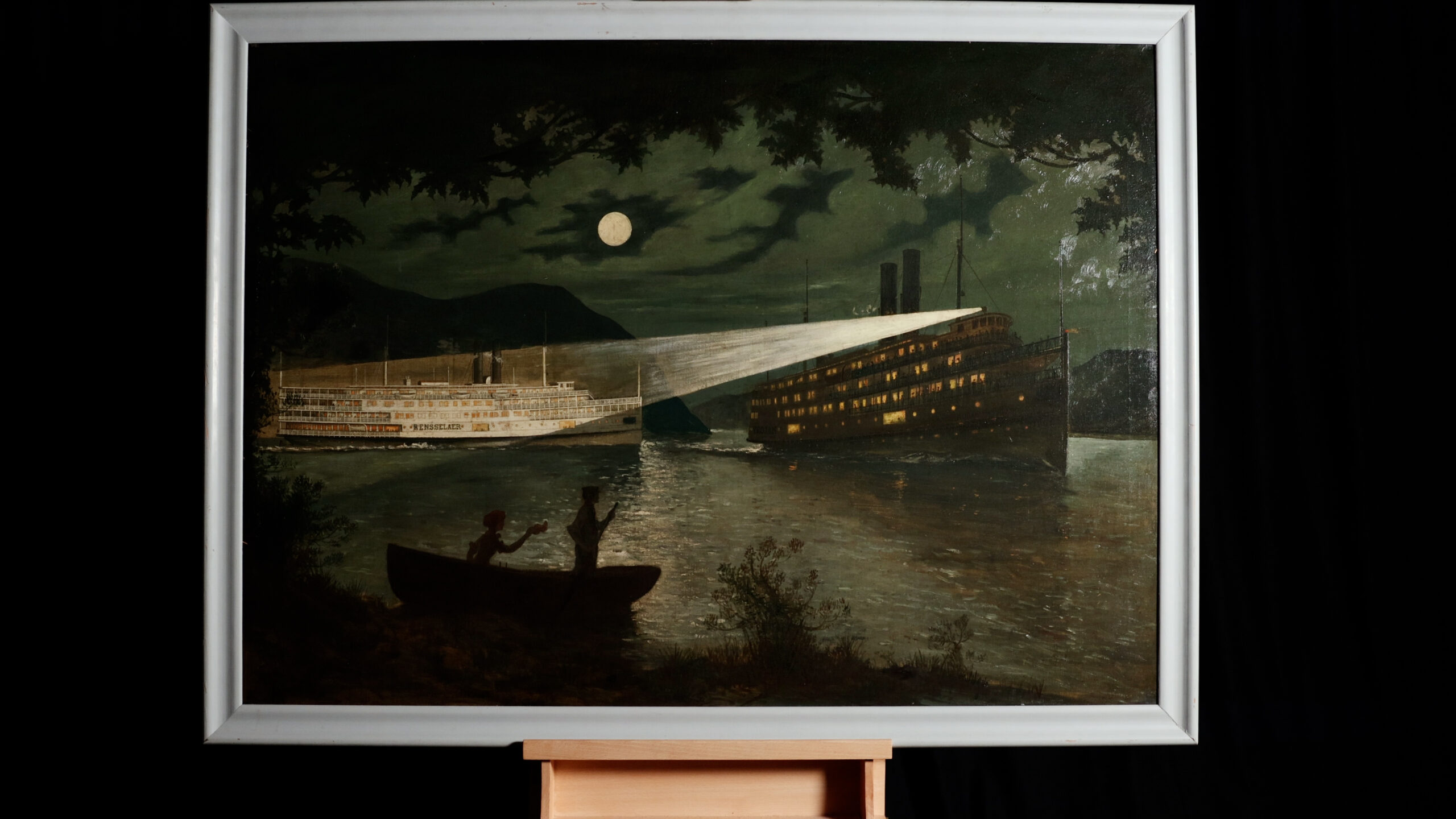
Setting the Scene
It’s a warm, balmy night on the banks of the Hudson River. The trees are lush, and the landscape is silhouetted against the glow of the cloudy night sky that glistens with the light from the full moon. The couple in front of us has pulled their small boat ashore as they heard the friendly and familiar chug of a steamboat moving up river. But its sound is doubled as another ship comes into view, a sister of the boat that steams toward us. The bright spotlight atop the pilot house of the boat on the right sweeps across its starboard side, illuminating the newcomer.
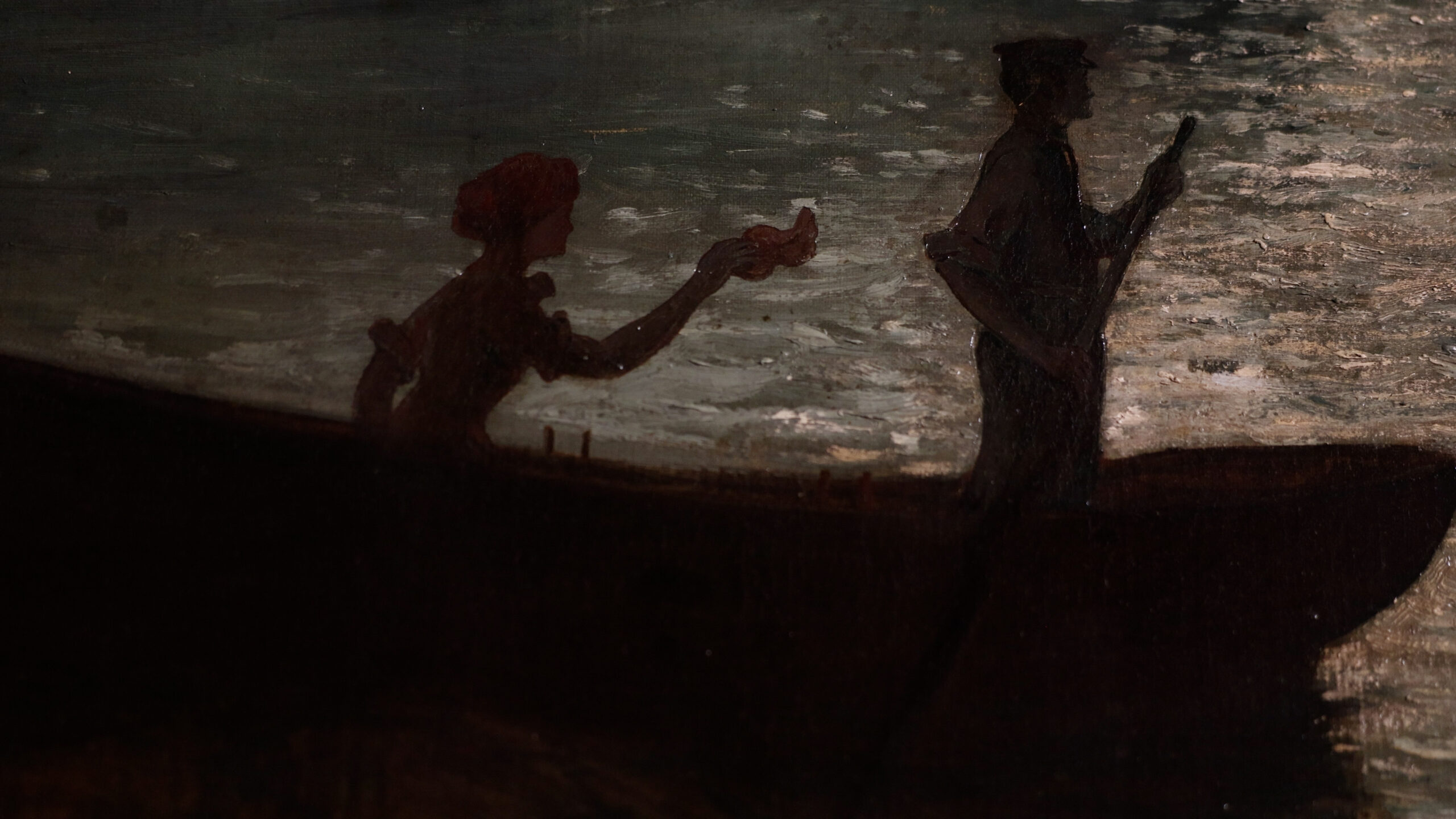
The couple on the shore looks on and the woman waves her handkerchief in a greeting as the piercing spotlight comes to rest on the ship at the left. The light glints off the large black letters on its side that proclaim its name. We stand here in the summer of 1909, welcoming Rensselaer, the newest member of the Hudson River Night Line as it joins its twin sister Trojan in service.
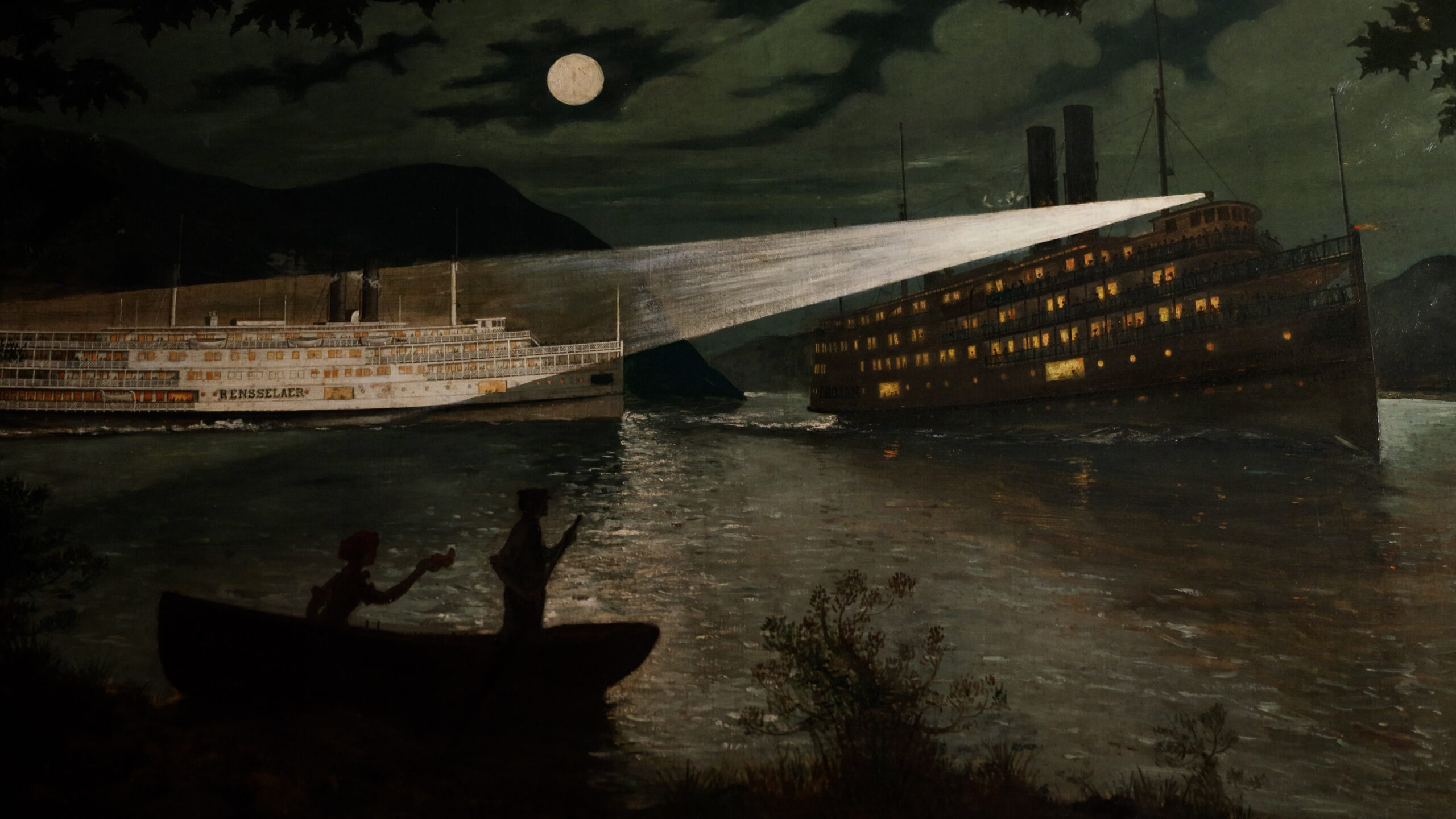
Not your Average Ship Portrait
This is not your average ship portrait, but this is also not done by your average ship portraitist. About a year ago, we explored alternative ship portraiture as seen through Antonio Jacobsen’s depiction of the Steamship Alamo in the Mallory Line Logo. It was through this that we saw that even the most structured and repetitive ship portraitists have been known to break their own mold from time to time. It might be easy to group Samuel Ward Stanton into this group of artists if we only see his well known, meticulous pen and ink drawings of steam vessels, primarily those that traversed the Hudson River and its surrounding waters.
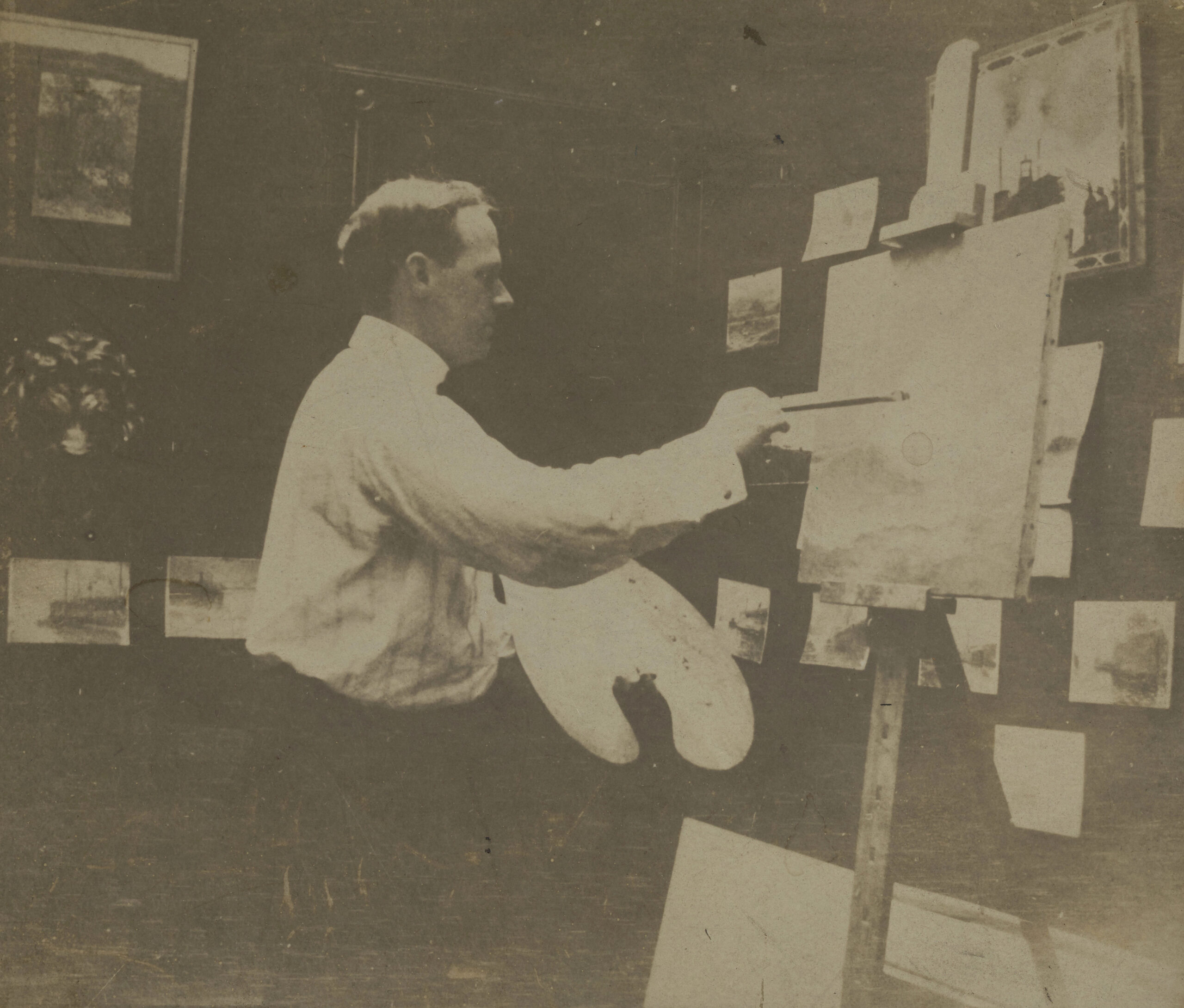
It was these beautiful but static depictions of the beloved vessels that brought the young artist to fame. At the age of 23, Stanton displayed his works at the first Chicago World’s fair and his rise to prominence began. But again, that is just a fraction of Stanton’s work, nothing like what we see in this inspired narrative painting.
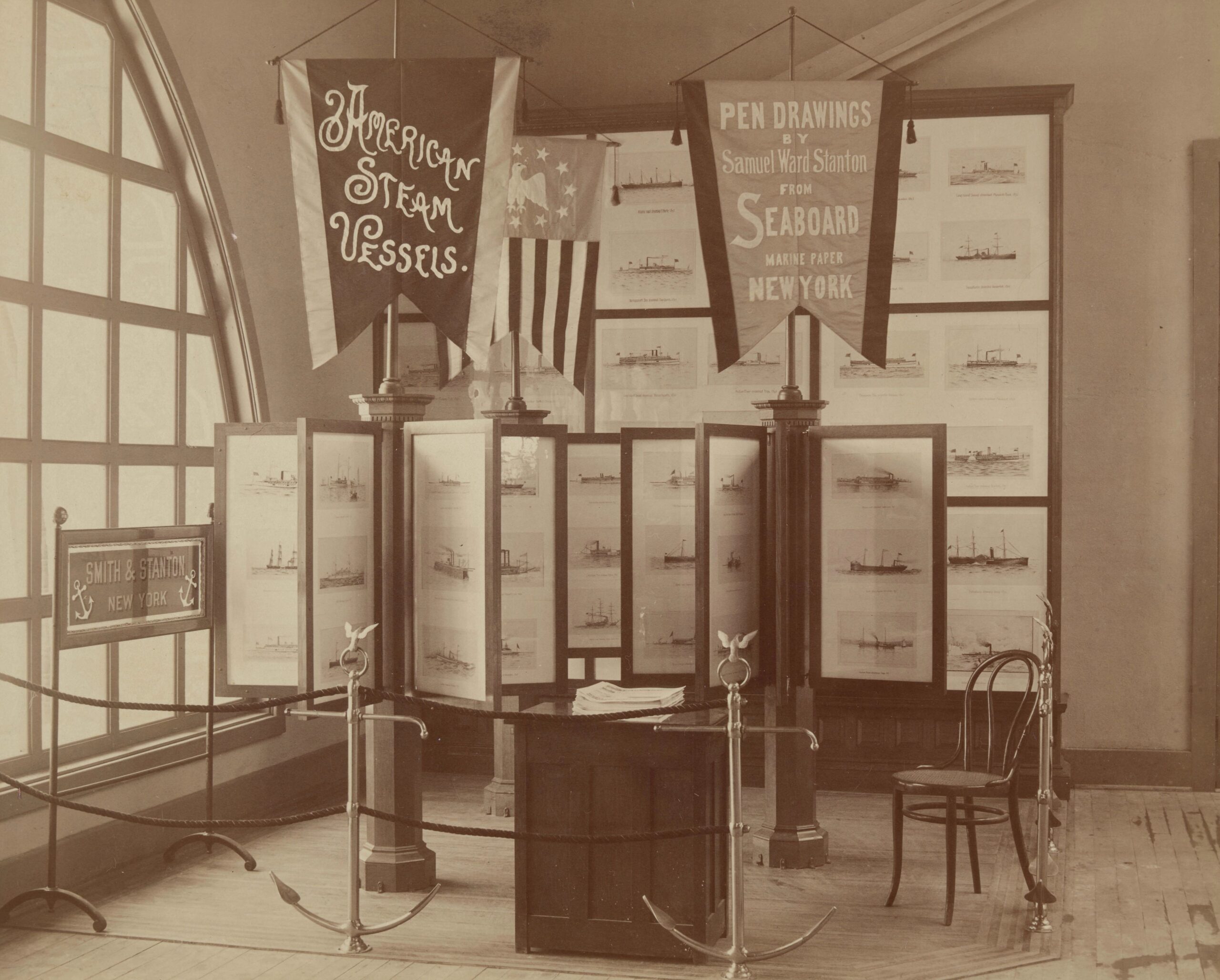
Art & Steamboats
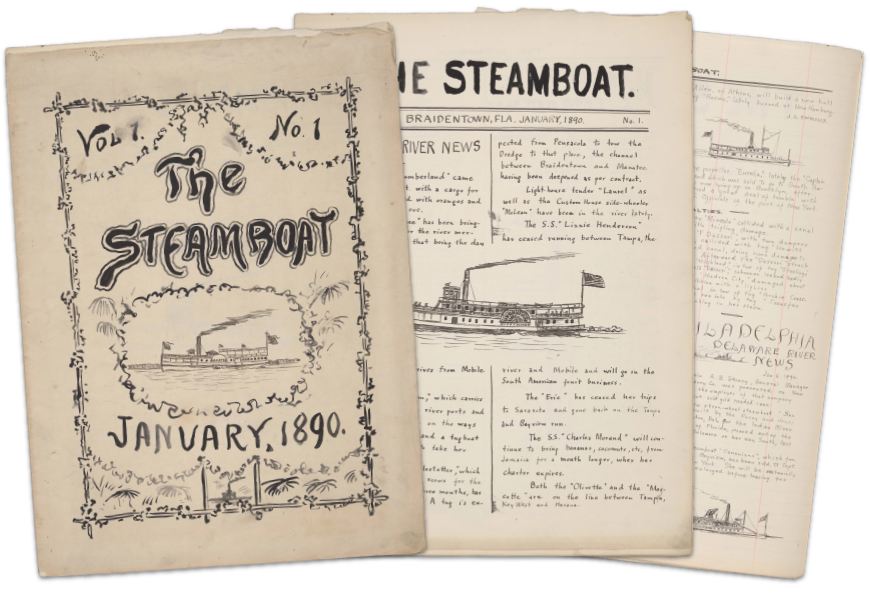
Stanton’s life revolved around steamboats – literally. His father Samuel Stanton was a principal of Stanton, Ward, and Co., a shipbuilding company in Newburgh, New York and young Stanton spent his days at the shipyard surrounded by these marvelous vessels. He doodled and sketched on anything he could get his hands on. He let his young imagination run wild as he dreamed of being a promoter for these very same ships – making up fantastic excursions and routes for guests from all over the world to embark on. He loved these boats; lived with them, and even lived on one when his family moved to Florida aboard a steamboat.
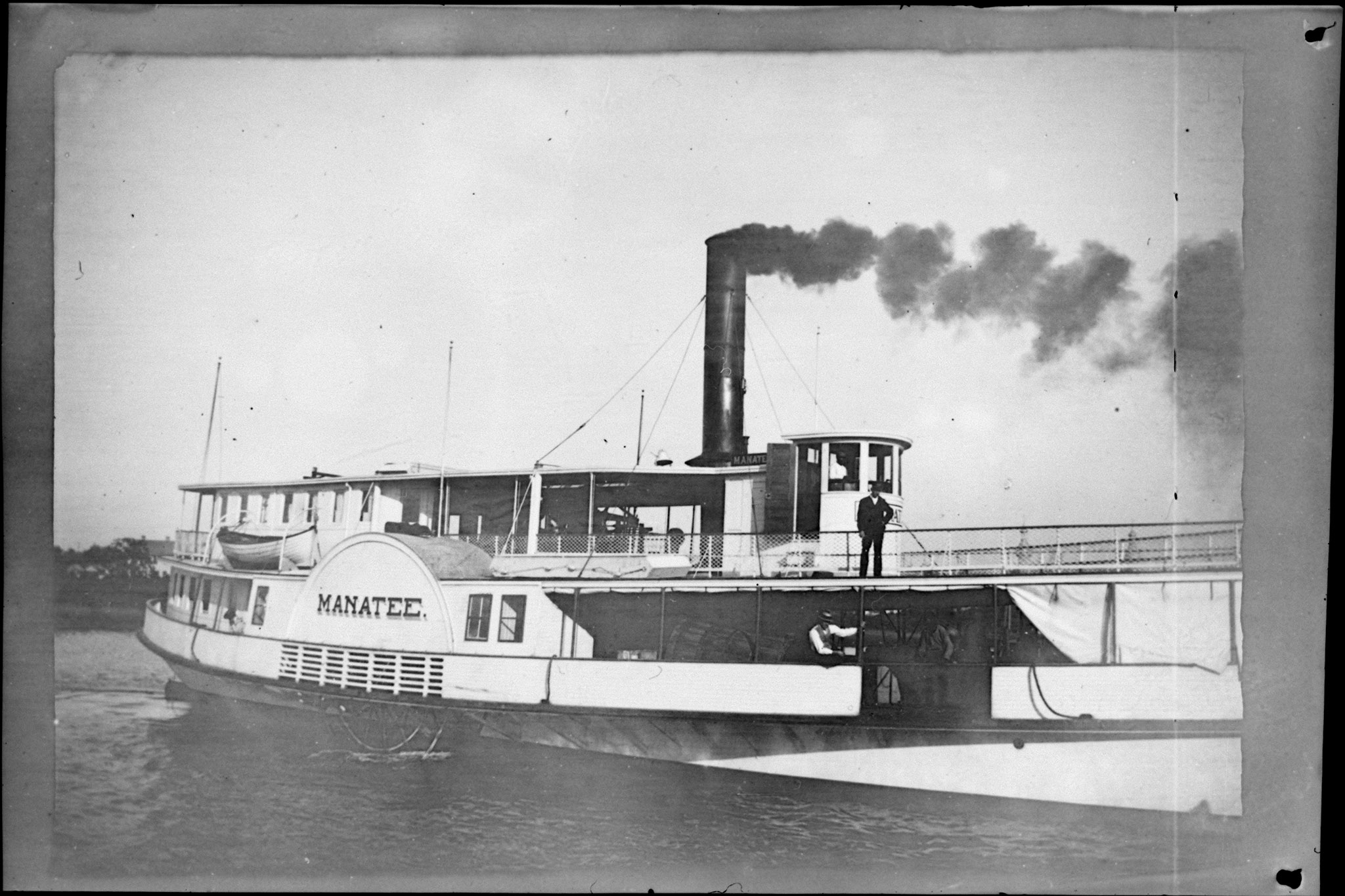
Art and steam vessels: These were Stanton’s loves – his life continuously revolved around a constant mixture of the two. Even his untimely death aboard RMS Titanic came as a result of art and steam vessels. It is because of this constant love of not only the visual arts, but also performance art like the poetry and music young Stanton studied and wrote, that his style takes on a more story-like, lyrical quality. We see this primarily as the artist moved more toward painting and mural work that graced the saloons of a number of steamboats. And it’s easy to see why the Hudson River was an inspiration for music, poetry, and art for Stanton.
Inspiring Natural Beauty
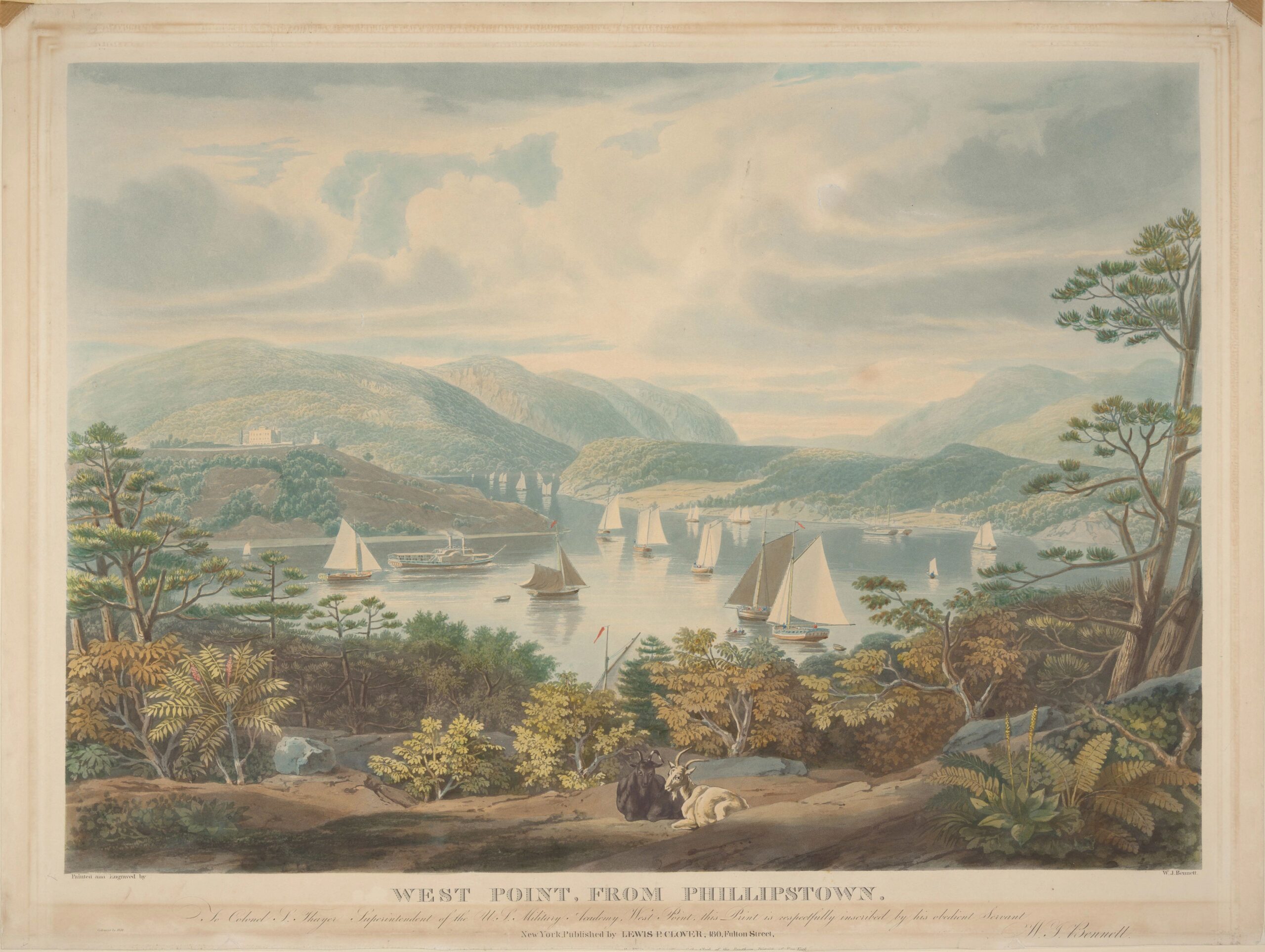
People of all backgrounds have been using the Hudson River in New York for travel, leisure, and commerce for hundreds, if not thousands, of years. Its verdant, forested hills that line the valley surrounding the river are so picturesque that they’ve become a wonder known around the world, and the river, itself a destination to take in the scenery. By 1909 when this work was painted, steamboat travel on the Hudson had become an efficient and affordable, yet luxurious way to travel and experience the beauty of the surrounding area, whether for locals or eager visitors from across the globe. There were several shipping lines that operated in the area, one of them being the Citizen’s Line of the Hudson Navigation Company.
The Night Line
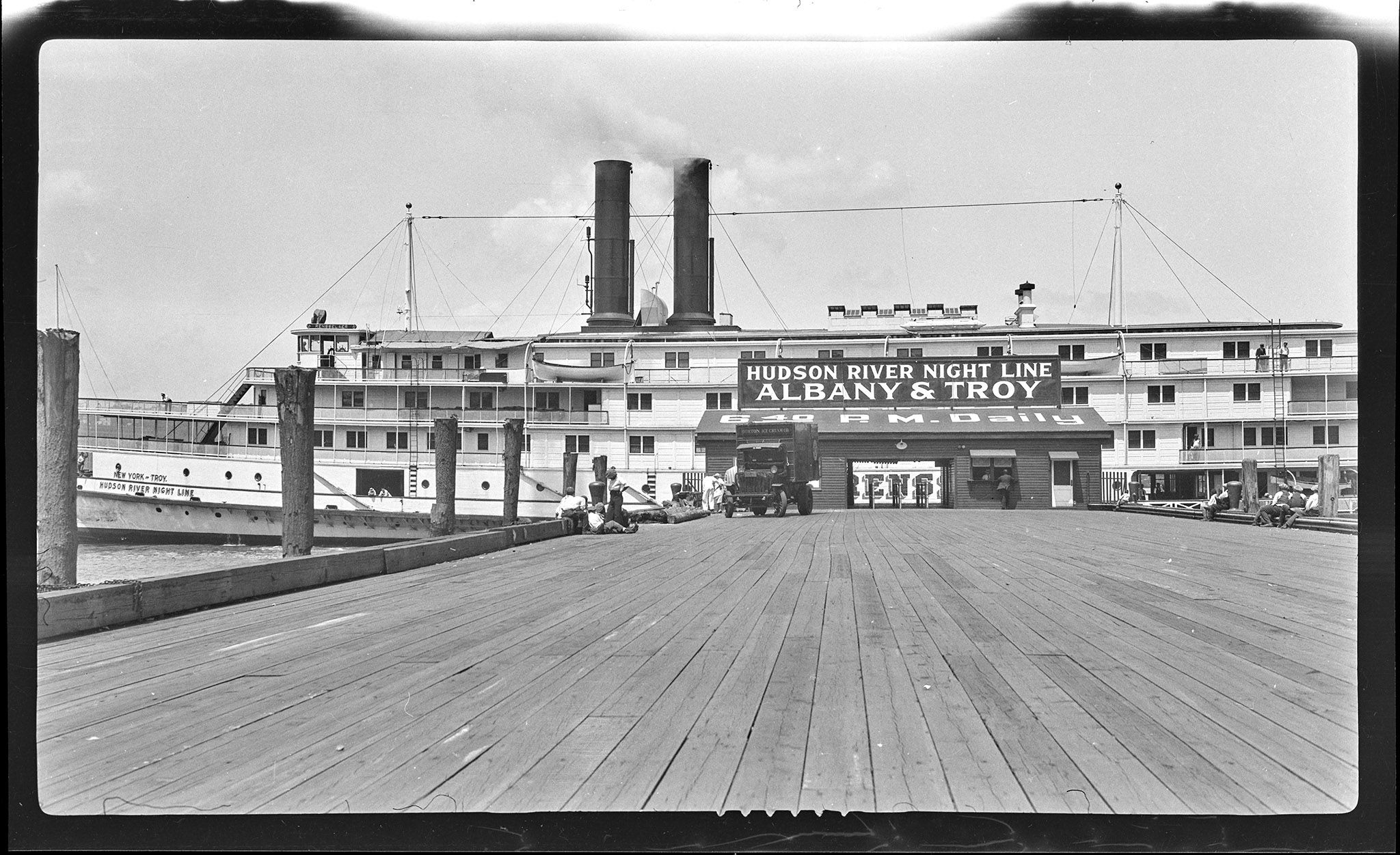
But these boats didn’t just run during the day, in fact, the night service ran boats up and down the Hudson between New York City and Troy or Albany. The boats of the “Searchlight Route” were outfitted with 36” military grade battleship searchlights, the largest manufactured, that pierced through the darkness. They swept the shores illuminating the surrounding headlands and providing a unique spectacle for passengers on board as well as any onlookers from the shore.
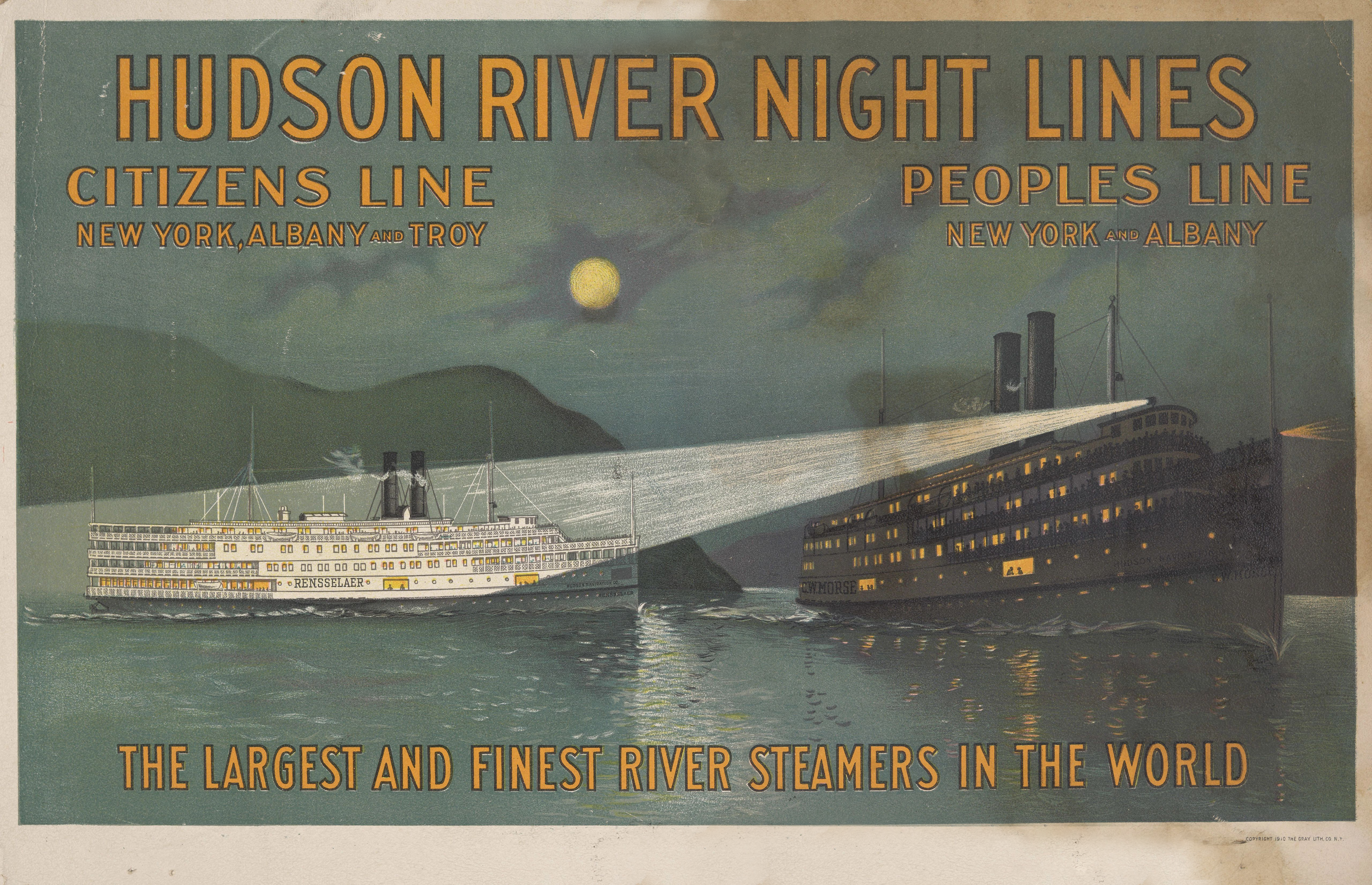
In the Spring of 1909, the Hudson Navigation Company introduced Trojan and then shortly after, Rensselaer, as the two newest members of the Citizens’ Line, operating the Searchlight Route on the Hudson River Night Line.
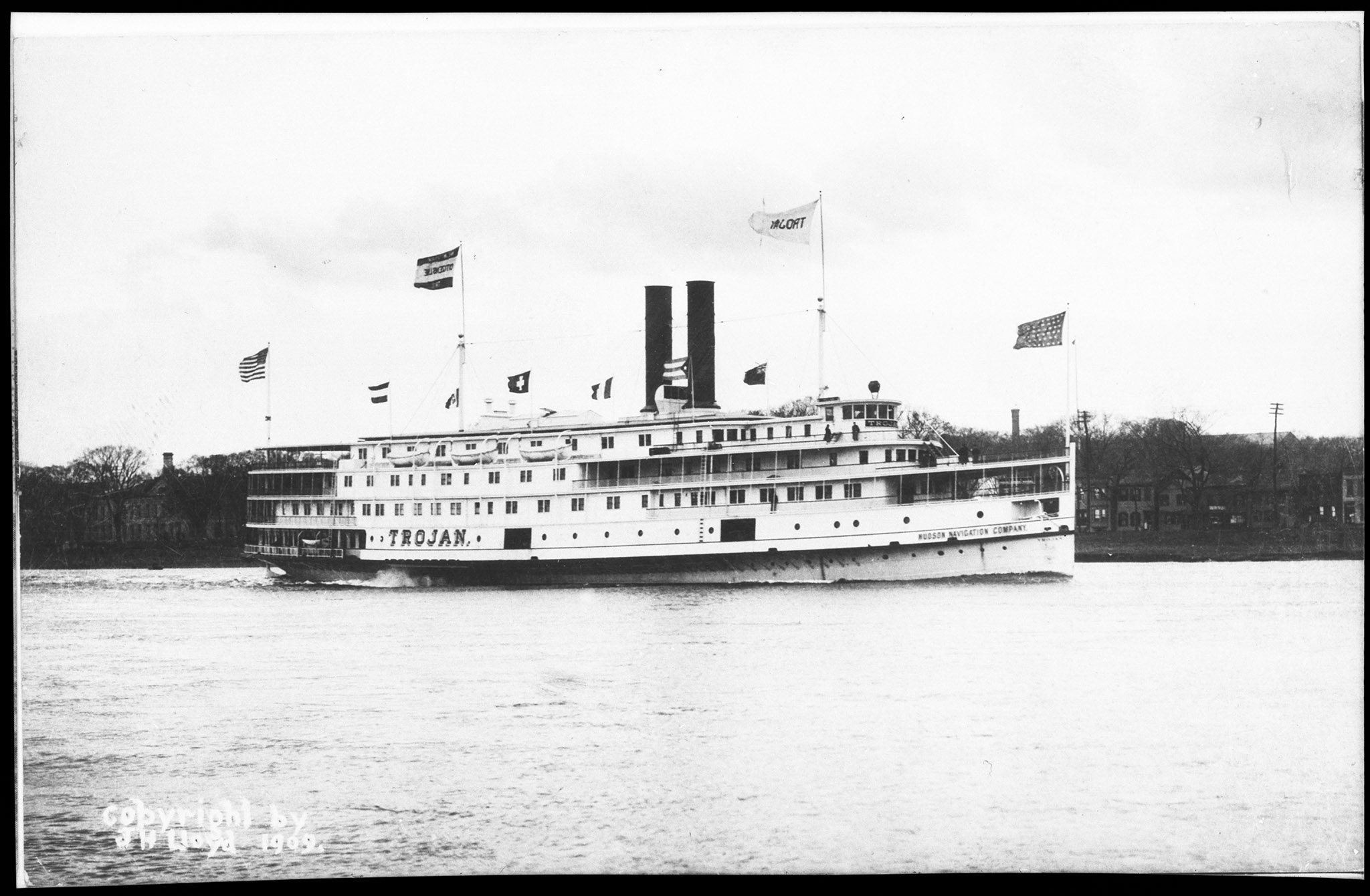
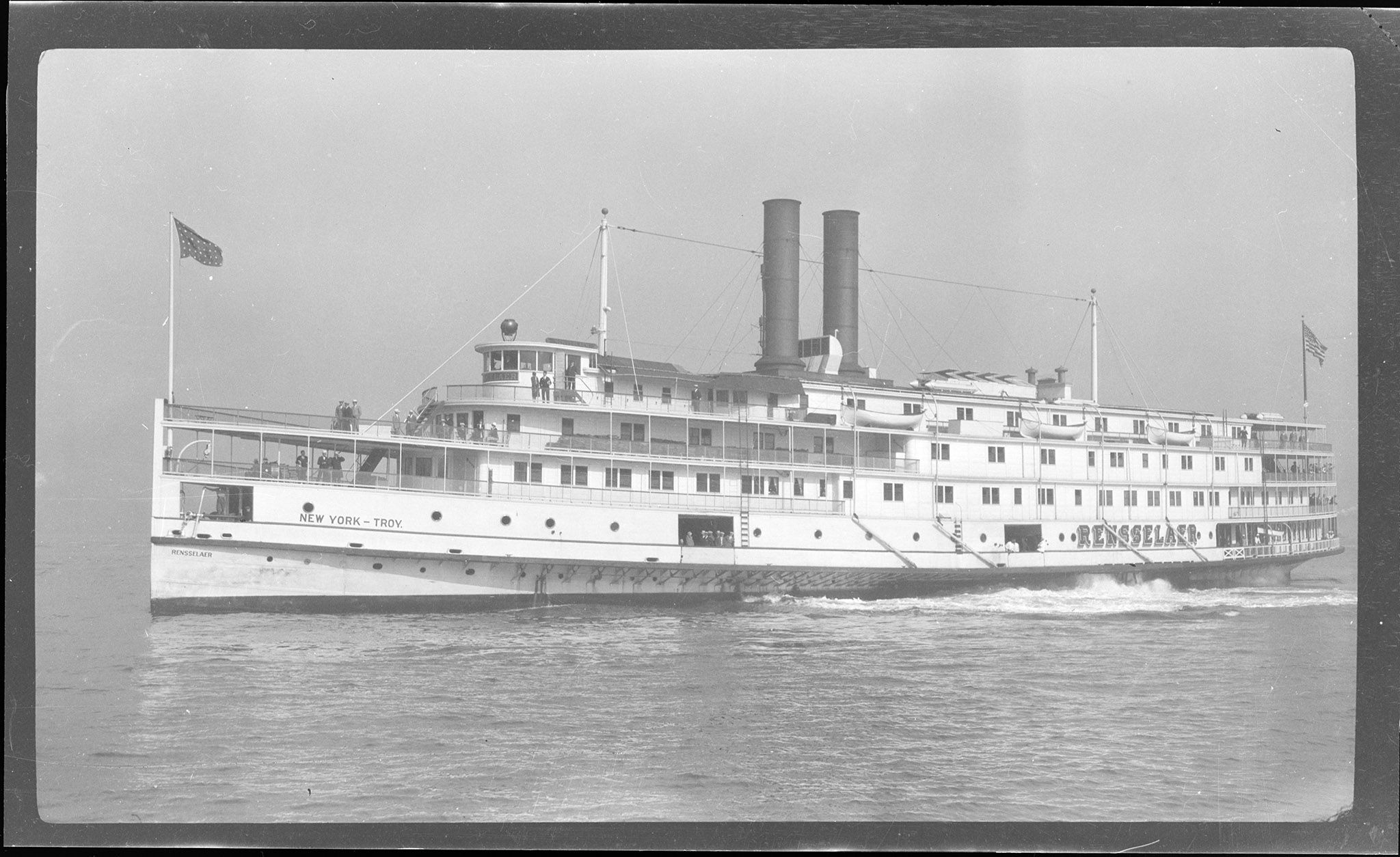
It’s very likely that Stanton painted this work as a commemorative commission for the two new vessels that were, themselves, a spectacle. The 330-foot long steel-hulled, paddle wheel beauties were decadently furnished in white, brass, and rich reds, greens, warm wood, and over 1,200 electric lights, further illuminating the darkness. A trip aboard Trojan or Rensselaer was surely an experience not soon forgotten.
Sharing his Love
And Stanton has captured that stately excellence that we might expect of a commissioned portrait. But as we look at this work, it doesn’t read as your average ship portrait. It’s not just a broadside of a ship painted with technical accuracy, although it does include that.
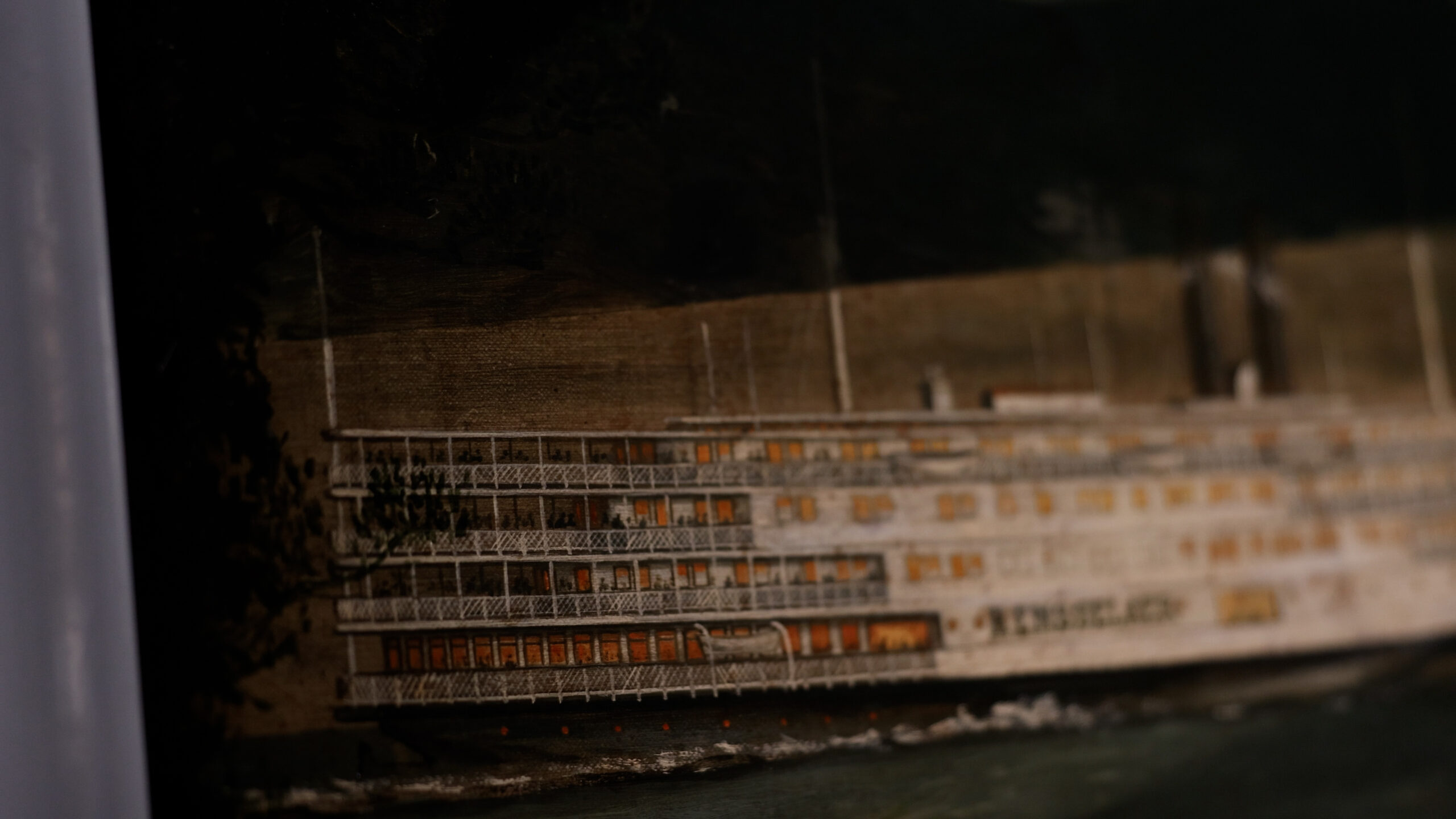
Instead Stanton has woven these ships into their own narrative, into a story that he has invited the viewer into. We’re there, a spectator on the shore, eager to see these phenomenal new vessels that are as beautiful inside as they are outside. We see that they’re twins and the artist has shown them not only from a bow and starboard view to give us more information about the vessels, but also in action – searchlight beaming, passing each other in the night. He’s painted them as being a welcome and beloved presence on the river, the woman happily waving in the foreground. And they’re dependable, the battleship searchlight’s beam even more illuminating in the dark than the light of a full moon.
But most importantly, he’s painted them in their own setting.
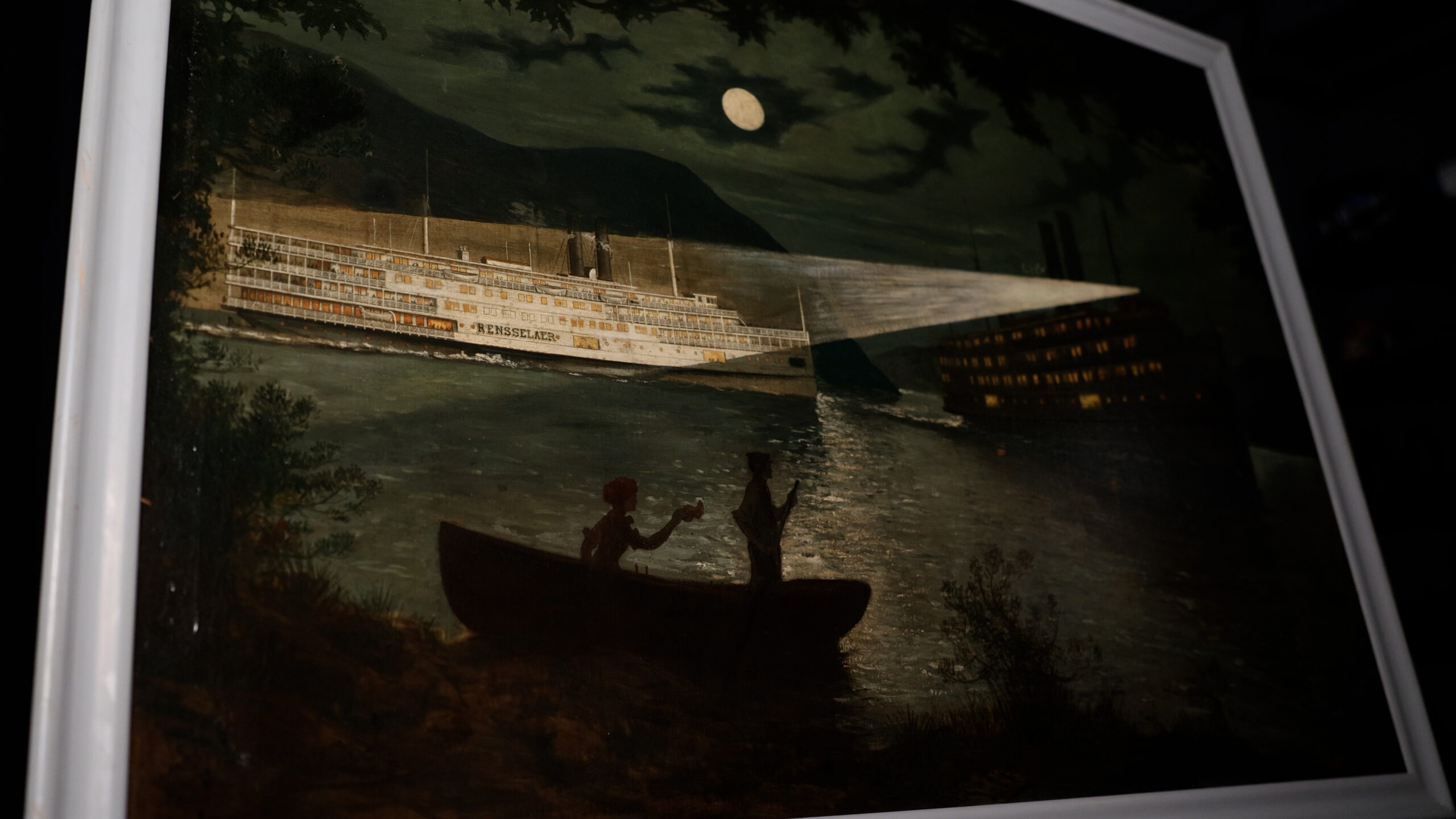
Yes, painting a ship portrait at night might be a challenging task, but it would not tell us anything about these steamboats, their route, or their purpose if Stanton had simply painted them in the day – perhaps in an unmarked body of water like so many other ship portraits of this time. Instead, by choosing to paint this work in the way he did, we are able to see Trojan and Rensselaer in a different light, under the light of the moon as they would have been during their many years of service. Through his techniques, Stanton has not only presented us with information to learn something about the vessels, but he’s also enticed us to want to step aboard the steam-powered marvels, just as millions before us have done, so that we can experience his love of steamboats for ourselves.
About the Artist: Samuel Ward Stanton
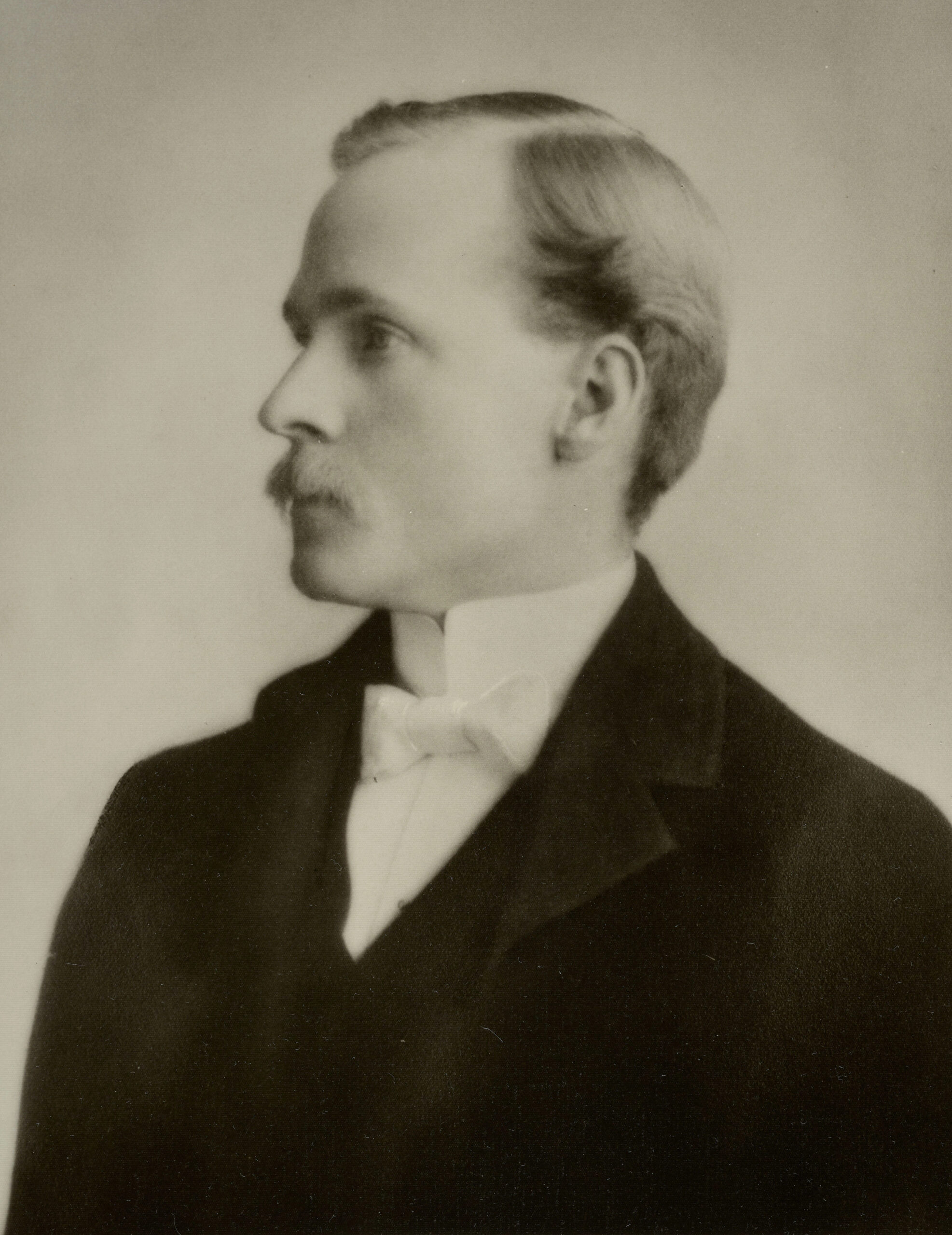
Before diving into a little bit about the artist, I feel compelled to share another interesting little story (or, at least, I think so) with you. When I first saw this painting, we were working up in painting storage and the beam of light caught my eye. I searched the object number, but our catalog record had almost nothing in it (which isn’t uncommon, with as many objects in our collection as we have, our small but mighty team is constantly surging against a 90+ year backlog). So I did what I always do, I searched the Artist’s name.
Now, normally this will pull up maybe 1-2 results in our catalog… but if you search “Ward Stanton” in our catalog, You’ll get close to 4,300 results… You think I’m kidding? Click here. I was shocked to say the least. Art, sketchbooks, manuscripts, imaginary newspapers, photographs, handwritten music, poetry (including a hauntingly beautiful poem on USS Monitor), and so…so much more. What I learned about the artist through looking through these files was the story of an incredibly imaginative and talented young boy who grew into a true artist and mariner whose bright, artistic flame that was snuffed out too soon.
Samuel Ward Stanton was born on January 8, 1870 in Newburgh, New York where he lived for his young life. There, his father was a principal of Stanton, Ward, and co. Shipyard which is where young Stanton, who, it seems from his journals, preferred to be called “Ward”, spent his days. He watched steamships being built and he was familiar with their routes. He made clippings from schedules and newspapers and kept track of the vessels’ comings and goings.
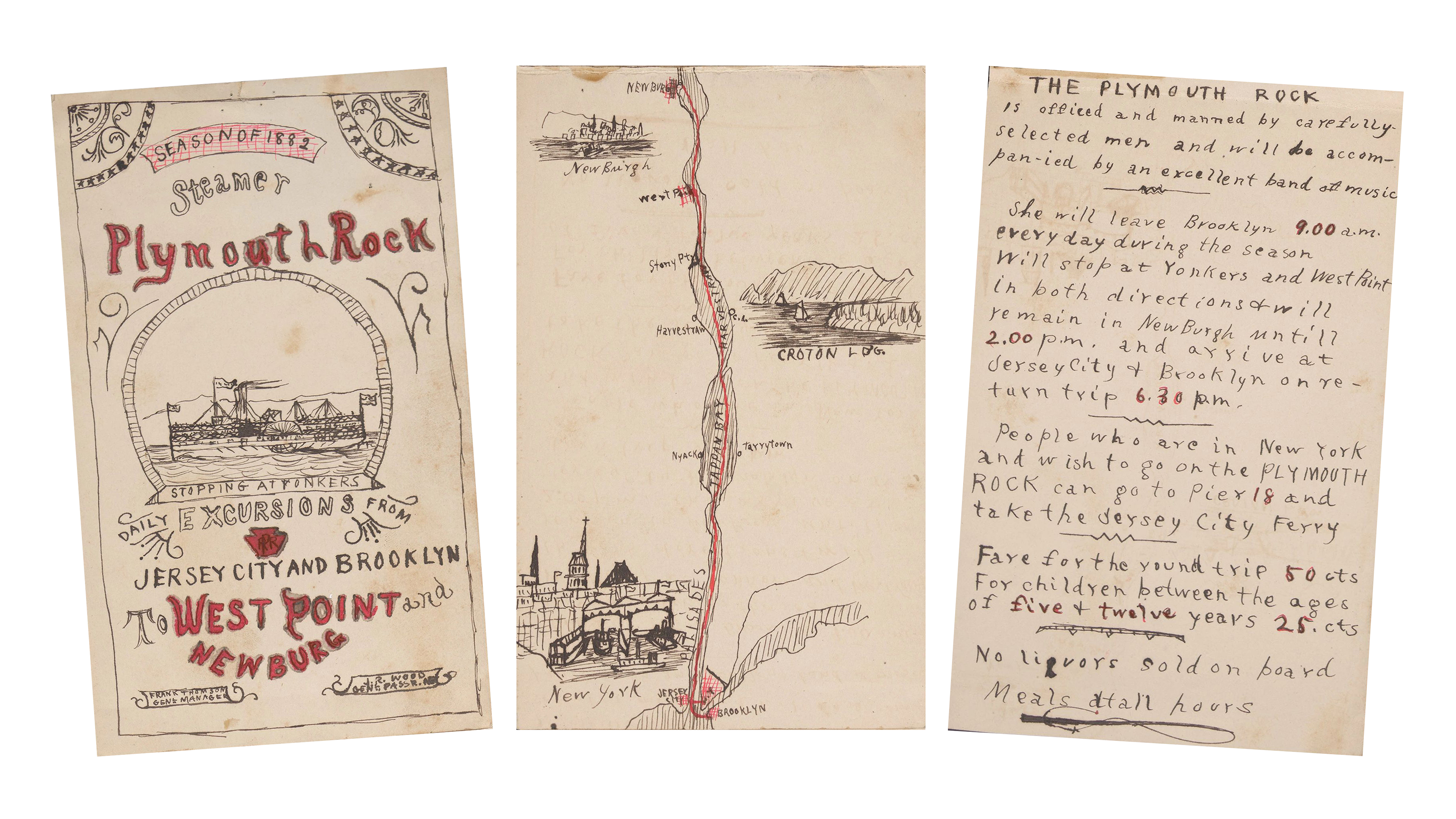
In 1884, when Stanton was 14, he and his family moved to Bradenton, Florida aboard the sidewheel steamer Manatee. It seems Stanton spent time in both Newburgh and Florida as he grew up. Throughout his life, the artist took a great deal of interest in music, poetry, and theater. He even composed and wrote a number of scores including the one below, Moonlight on the Manatee; the cover of which features the same ship on which his family moved to Florida.
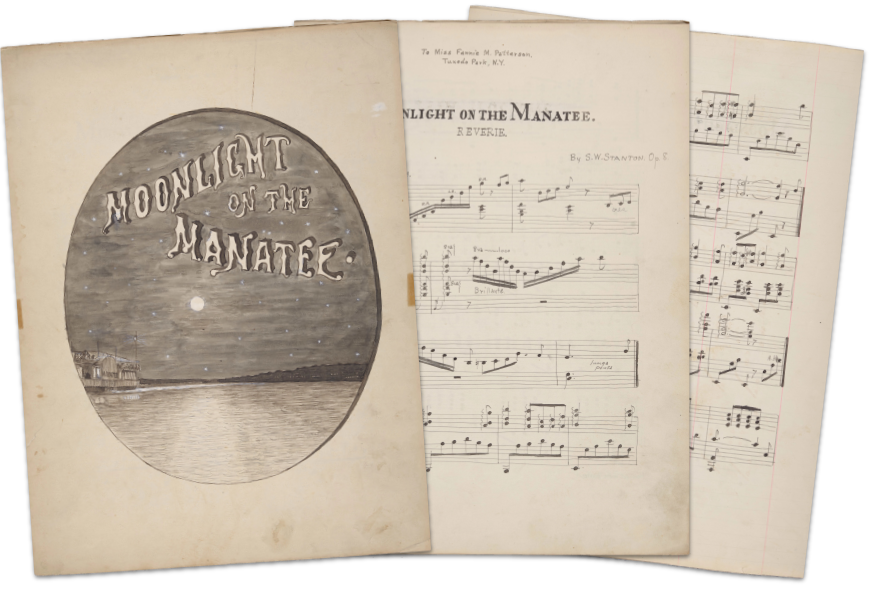
Over the years, the young artist pursued his passion for documenting steam vessels through through his “Steamship Chirographies” and his sketchbooks. In 1893, Stanton displayed his pen and ink drawings of steam vessels at the First Chicago World’s fair, or the World’s Columbian Exhibition in Chicago. He promoted the drawings for his upcoming publication, “American Steam Vessels,” which was published in 1895 by Smith and Stanton.
By that time, the artist was already submitting drawings to Seaboard Magazine as well as several other illustrated publications including Nautical Gazette. He served as a writer, illustrator, and editor for several of these publications, and he also established his own advertising design and lithography business in New York.
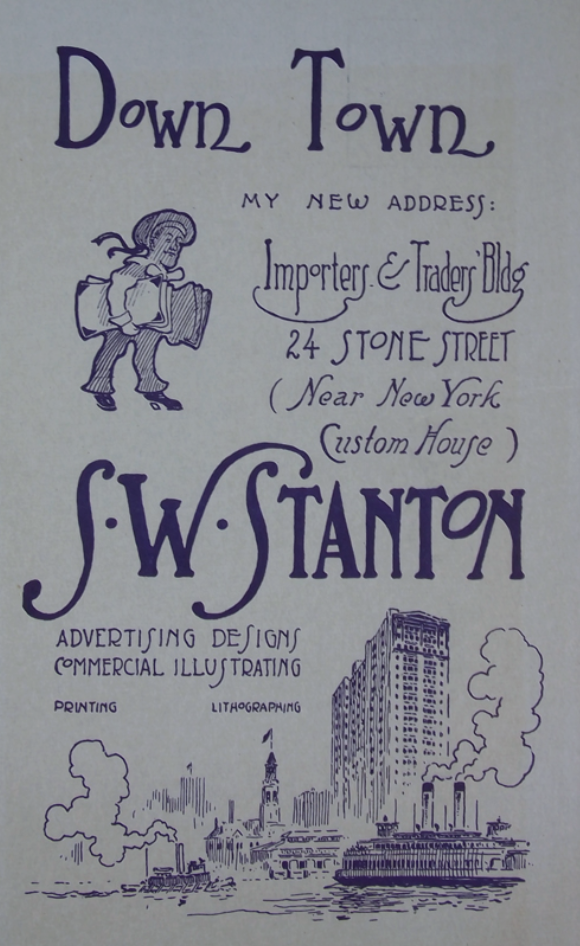
While his pen and ink works were his most prolific, the artist did venture out into painting, both oils on canvas and murals. On June 6, 1897, Stanton married Cornelia Arents Whitehurst and together, the two had 3 children, Elizabeth, Marguerite, and Ward. By 1912, Stanton had painted several murals in the galleries of several steamers and was visiting the Alhambra in Granada, Spain to study artwork for a mural that he was to paint on a new steamship, Washington Irving. However, the artist would never see this work come to fruition. He was originally booked to board the Steamship Baltic, until his fellow artist and friend, Francis Davis Millet, convinced him to board the spectacular new RMS Titanic. The two boarded the ship and were lost during its sinking on the night of April 14, 1912.
Watch the full episode below!
Sources:
- Samuel Ward Stanton Artist File, The Mariners’ Museum and Park.
- Nautical Gazette, vol. 82, no.5. Wednesday, September 11, 1912.
- https://www.tampabay.com/archive/1998/03/24/where-art-and-life-collided/
- https://www.hrmm.org/history-blog/a-titanic-loss-the-death-of-samuel-ward-stanton